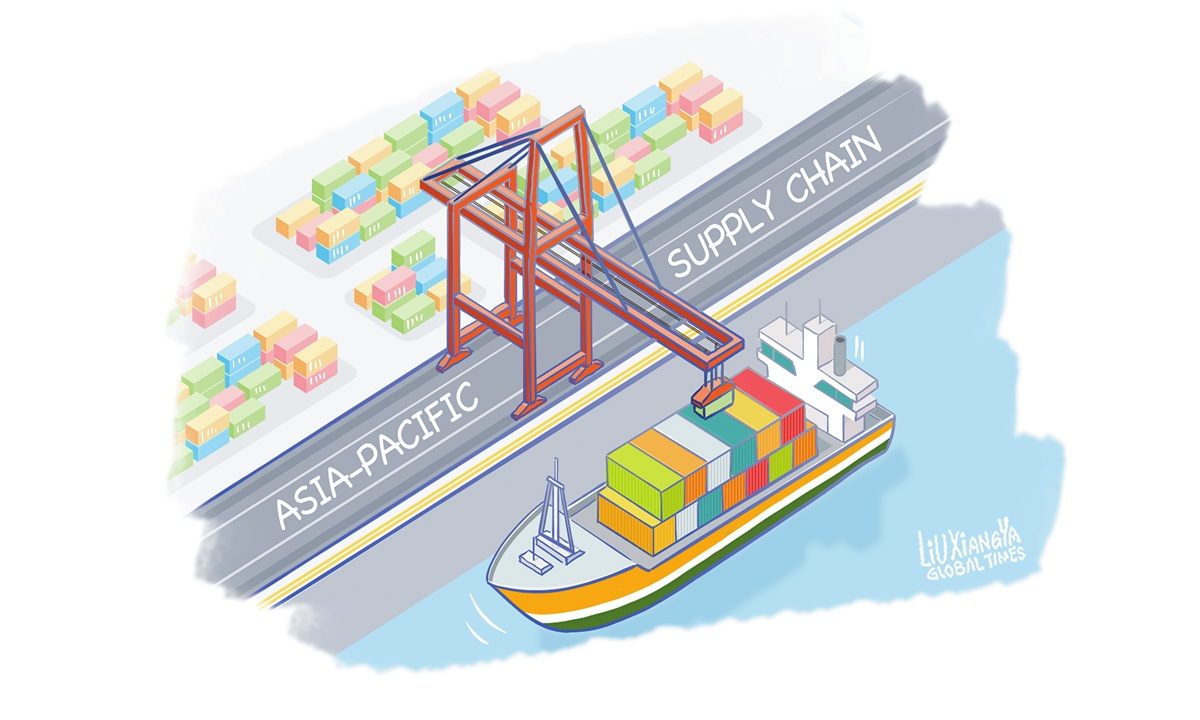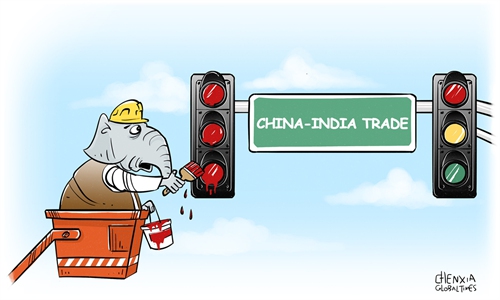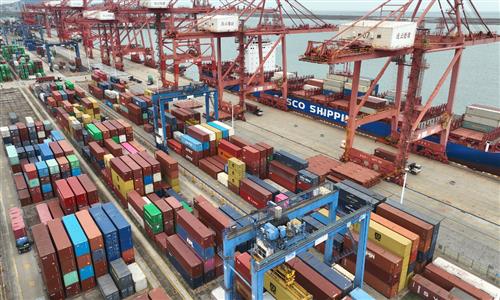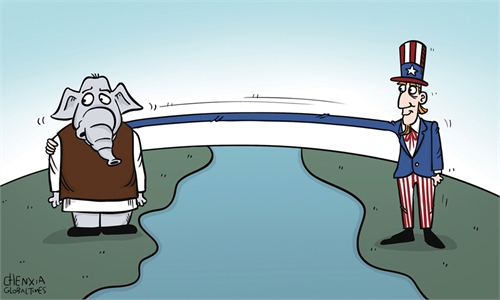
Illustration: Liu Xiangya/GT
With talks to upgrade the India-South Korea free trade agreement (FTA) moving forward, senior officials of both countries will hold the next round of negotiations from Wednesday in Seoul, Indian news agency PTI reported, citing "an official."It is indeed a positive step by India. Yet it is not enough. If the country wants to fulfill its ambitions to make itself a regional manufacturing hub, it has to further integrate into the Asian supply chain and expand its foreign markets.
Factory activity in India grew quite strongly in recent months. The HSBC final India Manufacturing Purchasing Managers' Index, compiled by S&P Global, rose to 58.3 in June, the Hindustan Times reported. It has been above 50, which separates growth from contraction, for a long period.
India's manufacturing industry has enjoyed solid growth. New Delhi may try to make India's manufacturing sector a strong engine for economic growth and jobs, but India's political elites have to answer a question: how to help domestic companies expand in overseas markets at a time when the country continuously invests in new manufacturing capacity?
Some Asian economies have seen rapid growth in their manufacturing sectors in recent decades. Their labor-intensive, export-oriented and manufacturing-based growth paradigm has delivered growth with jobs. The big question is: will India copy the experience of other Asian countries' economic successes, further integrate itself into the Asian industrial chain, and promote the development of export-oriented businesses?
India and South Korea signed a Comprehensive Economic Partnership Agreement (CEPA) in August 2009, which came into effect in 2010. It is believed to have had a positive impact on bilateral trade.
India's efforts to upgrade the existing CEPA give a positive signal that New Delhi holds an open attitude toward free trade, and has been actively expanding the overseas market for made-in-India products. This is obviously good news for the Indian economy. We hope India can negotiate FTAs with more countries and regions and accelerate its pace.
For a long time, India has been hesitant about signing FTAs. India's exit in 2019 from negotiations on one of the world's largest trade deals - the Regional Comprehensive Economic Partnership (RCEP) - means huge losses for the Indian economy. If India returns to the negotiating table of the RCEP, it can not only benefit from more market access, but also further integrate into the Asian supply chain.
India has consistently beat market expectations and is ranked as one of the fastest-growing economies in the world. The rapidly growing Indian domestic consumer market as well as substantial investment incentives from the Indian government have made India an increasingly attractive investment destination for global manufacturers. However, overseas investors mainly focus on India's domestic market, rather than viewing India as a manufacturing base and export hub. This has been seen as one of the big challenges facing India's manufacturing sector.
It seems India still has a long way to go in developing its export-oriented economy. The country is lagging behind in the race to enhance economic ties with other countries through regional FTA initiatives. India needs to accelerate its efforts in this regard.
From the perspective of India's economic interests, the country should consider returning to RCEP negotiations. The implementation of the RCEP has played a significant positive role in promoting regional trade cooperation since it took effect in 2022, despite the growing risk of global trade protectionism. India should reflect on its attitude toward the RCEP and actively embrace free trade.
The author is a reporter with the Global Times. bizopinion@globaltimes.com.cn



